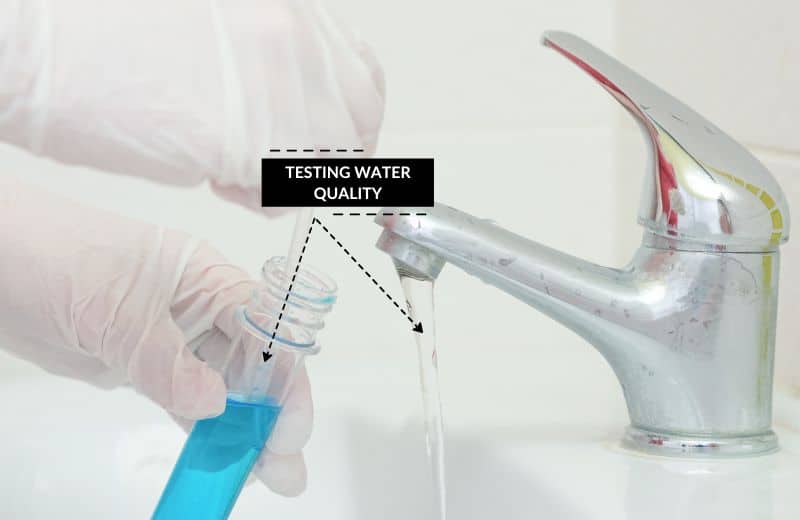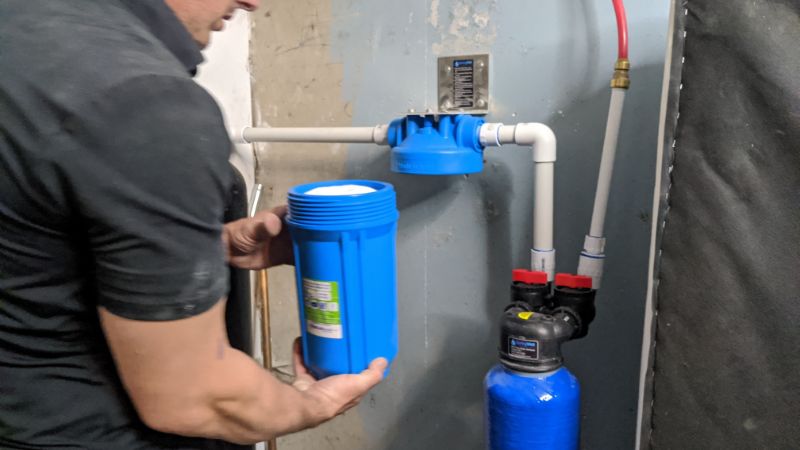Wondering how long you’ll get out of your reverse osmosis (RO) membrane before you need a new one?
In this guide, we’ve answered the question, “How long do RO membranes last?”
📌Key Takeaways:
- The average lifespan of a membrane in a reverse osmosis system is 24 months, or 2 years.
- Factors affecting membrane life include the quality of the membrane, the feed water quality, and your daily purified water production.
- You can extend the lifespan of the RO membrane by only using the system when you need it and installing a pre-filter.
Table of Contents
📈 How Long Does An RO Membrane Last?
On average, the semi-permeable membrane in RO filters lasts 2 years, or 24 months.
Some membranes may last up to 3 years, and we’ve even heard of membranes lasting up to 5 years.
On the other end, your RO membrane might last less than 2 years if the water quality conditions are less than optimal.

📋 Factors Affecting Semi-Permeable Membrane Lifespan
The lifespan of the membrane in a reverse osmosis system is affected by the following factors:
Membrane Quality
The quality of the membrane is one of the biggest factors that affect its lifespan.
Different reverse osmosis water filtration systems use their own manufactured membranes. Some membranes are better built, with stronger bonds and a more durable design, than others.
The better the membrane quality, the better it’ll withstand years of high water pressure and contaminant rejection.
However, even the best-quality membrane will degrade eventually, hence the 2-year average lifespan.
Feed Water Quality
Your feed water quality will also affect the membrane lifespan.
If your drinking water contains calcium and magnesium (hard water) minerals, the membrane in your RO system probably won’t last as long because these minerals will accumulate as scale on the membrane surface.
High levels of iron, manganese, chlorine, and other chemicals and minerals may also cause fouling of the membrane and degrade its surface at a faster rate, shortening its lifespan.
Generally, the higher your water’s total dissolved solids (TDS) levels, the faster the membrane will degrade because it’ll need to work harder to reject more contaminants.

Purified Water Volume
Finally, the volume of water treated in the reverse osmosis system will play a part in determining how long the membrane lasts.
The more water that passes through the system per day, the more work the system must do, and the faster the reverse osmosis membrane will degrade.
If you have a big family or need a lot of pure water every day, you’ll probably have to replace the membrane more frequently.
You’ll notice that your pre-filters (your sediment filter and your carbon filters) also degrade at a faster rate when your daily purified water needs are higher than average.
📆 How To Extend The Lifespan Of RO Membrane
There are a couple of good methods to extend the lifespan of your RO membrane and reduce the frequency of filter changes:
Only Use The System When You Need It
If you currently use your RO system every time you turn on your cold water faucet, consider whether you could reduce its use frequency.
For instance, you might currently use your cold water to quickly rinse your hands, fill your pets’ water bowls, fill watering cans for your garden, or rinse dishes before you load the dishwasher. None of these instances require purified water.
Try to only use your RO system when you need it. This should reduce the volume of water flowing through the system every day and slow down the rate of membrane degradation.
Install A Pre-Filter
Certain contaminants are known to foul RO membranes and shorten their lifespan. Iron, manganese, and hard water minerals are the prime suspects.
If your water supply contains a high concentration of iron or manganese, look into oxidation & filtration systems.
These whole home systems remove up to 20 PPM of iron and 6-7 PPM of manganese (some systems can remove even more than this), eliminating these minerals from your entire plumbing system and preventing fouling of your RO membrane.
The best way to treat hard water (with a high concentration of calcium and magnesium minerals) is with a water softener.
Water softeners are also point-of-entry units that eliminate hardness minerals from your whole home with a process called ion exchange, preventing these minerals from forming scale on your RO membrane.
💡 Keep in mind that you should never aim to extend the lifespan of the membrane for months beyond the manufacturer’s recommended replacement time.
Even if the membrane looks clean enough, after so many years of use, it’s at a higher risk of developing bacteria and mold. The last thing you want is to re-contaminate your purified water with nasties that could make you sick.

🤔 How To Know When To Replace The Membrane In RO Systems
You’ll know it’s time to replace your RO water filter membrane when you notice a combination of the following things:
- Reduced water flow rate
- Higher TDS in your pure water (use a TDS meter to check)
- Poor water taste or smell (due to a buildup of organic contaminants)
- A cloudy or discolored membrane
Even if you don’t notice these signs, for the sake of your safety, you should still replace the membrane once it reaches the end of its expected lifespan.
🧽 Can You Clean And Reuse an RO Membrane?
No, you can’t clean and reuse an RO membrane to extend the membrane life.
The surface of the RO membrane is thin and delicate, and attempting to clean the membrane with water or soap will only damage it.
A damaged membrane may be unable to effectively reject impurities because of holes and degradation on the surface.
If you want to enjoy purified water for years to come, you should always replace the membrane completely when it reaches the end of its lifespan.
📑 Final Word
RO membranes last longer than the activated carbon filter and sediment filter stages in RO purifiers. But they still require periodic maintenance to keep your RO system in good working order.
If you’re not sure how long your RO membrane should last, check the user manual for maintenance information or reach out to the manufacturer.
We recommend making a note of when the membrane will need to be replaced, so you can buy a new membrane and have it ready to go when the replacement is required.
